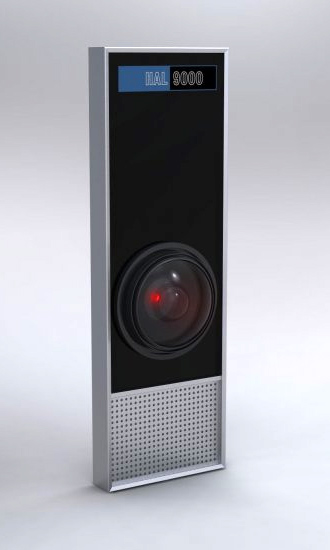Back when I was a member in the early-oughts, I had worked out a pretty detailed plan for the most accurate HAL panel yet. I'll have to dig them up. I was OBSESSED over it.
I came up with a way to make a lens assembly that would correctly replicate the Nikor lens. In essence, you could make a kind of two-part mold. Let me see if I can explain it:
The bottom half of the mold would basically be your outermost element. The top half of the mold would be kind of like a "lid": imagine it being flat on top, like any old lid, but on the inside, it would be made up of several different domes, stacked on top of each other. (not spheres, but domes) When you pour your clear resin, you put the lid on, and the resin forms around this shape. It cures, you pull it out, and then you have a "solid" lens, the front being the outer, dome-element, the back being a semi-hollow, multi-layer hole of sorts, representing all the other lens elements nestled inside.
Does that make sense, or should I make a drawing? It's pretty easy to do.
For the panel, I was getting quotes to get it sand-cast, but I never went through with it. I was just going to do a simple mold out of metal, paint it matte black, then use a sanding block to reveal the metal in the raised areas. Again, pretty simple.
For the logo, I have the correct art somewhere (I have a knack for re-creating graphics correctly; see the old "One Ring" project from around 2001), and I was just going to use, I think, transfer paper to do it directly onto the metal, probably after some white primer was applied to the area.
Any thoughts? I'd still be into doing this project.





